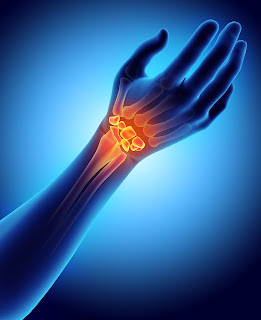What is Carpal Tunnel Syndrome? Definition, Causes, Sign and Symptoms, Medical Treatment and Physiotherapy Management
Definition
Carpal tunnel syndrome is a condition that affects the hand and wrist. It occurs when there is pressure on the median nerve, which runs from the forearm into the hand. The median nerve controls sensations to the palm side of the thumb and fingers (although not the little finger), as well as movement of some of the muscles in the hand.
Causes of CTS
There are several potential causes of carpal tunnel syndrome, including:
Repetitive movements: Performing the same hand and wrist movements over and over again can lead to inflammation and swelling around the median nerve, leading to carpal tunnel syndrome.
Obesity: Being overweight or obese can increase the pressure on the median nerve, leading to carpal tunnel syndrome.
Pregnancy: The hormonal changes and fluid retention that occur during pregnancy can cause swelling in the wrist, leading to carpal tunnel syndrome.
Diabetes: People with diabetes are at increased risk of developing carpal tunnel syndrome due to changes in their blood vessels and nerves.
Rheumatoid Arthritis: This autoimmune disorder can cause inflammation in the wrist, leading to carpal tunnel syndrome.
Thyroid Problems: An overactive thyroid gland (hyperthyroidism) can cause swelling in the wrist, leading to carpal tunnel syndrome.
Fractures or Dislocations: Injuries to the wrist can cause swelling and inflammation that can lead to carpal tunnel syndrome.
Sign and Symptoms
The most common symptoms of carpal tunnel syndrome include:
- Numbness and tingling in the hand, particularly in the thumb, index finger, middle finger, and half of the ring finger.
- Pain in the hand, wrist, and arm that may radiate up to the shoulder.
- Weakness in the hand and difficulty gripping objects.
- A sensation of the hand "falling asleep" or feeling "pins and needles."
- Swelling in the hand and wrist.
Symptoms of carpal tunnel syndrome may be worse at night and may awaken the person from sleep. They may also be triggered by certain activities that involve prolonged use of the hand and wrist, such as typing, using a mouse, or playing an instrument. In severe cases, carpal tunnel syndrome can cause muscle atrophy (wasting away) in the hand and wrist. If you experience any of these symptoms, it is important to see a doctor for a proper diagnosis and treatment.
Medical Management CTS
The first line of treatment for carpal tunnel syndrome is often non-surgical. This can include:
Wrist splints: These can help to hold the wrist in a neutral position and alleviate pressure on the median nerve.
Non-steroidal anti-inflammatory drugs (NSAIDs): These can help to reduce inflammation and pain.
Corticosteroid injections: These can help to reduce inflammation and provide relief from symptoms.
If non-surgical treatment is not effective, surgery may be recommended. The most common surgical procedure for carpal tunnel syndrome is called a carpal tunnel release. During this procedure, the ligament that forms the roof of the carpal tunnel is divided to create more space for the median nerve.
It's important to follow your healthcare provider's recommendations for treatment of carpal tunnel syndrome. If you have any questions or concerns about your treatment plan, be sure to discuss them with your healthcare provider.
Physiotherapy Management
Physical therapy can be an effective treatment for carpal tunnel syndrome. The goals of physical therapy for carpal tunnel syndrome are to:
Reduce pain and inflammation: Therapeutic modalities such as ice, heat, or ultrasound can be used to help reduce pain and inflammation.
Improve range of motion and flexibility: Stretching and range of motion exercises can help to improve flexibility in the wrist and hand.
Strengthen the muscles in the wrist and hand:
Strengthening exercises can help to improve the function and strength of the muscles in the wrist and hand.
Improve overall function: Occupational therapy techniques and activities can help to improve overall function and decrease the risk of further injury.
It's important to work closely with a physical therapist to develop a treatment plan that is tailored to your specific needs and goals. It's also important to follow the recommended treatment plan and to communicate any concerns or questions to your therapist. With proper treatment, most people with carpal tunnel syndrome can experience significant improvement in their symptoms and function.

Comments
Post a Comment